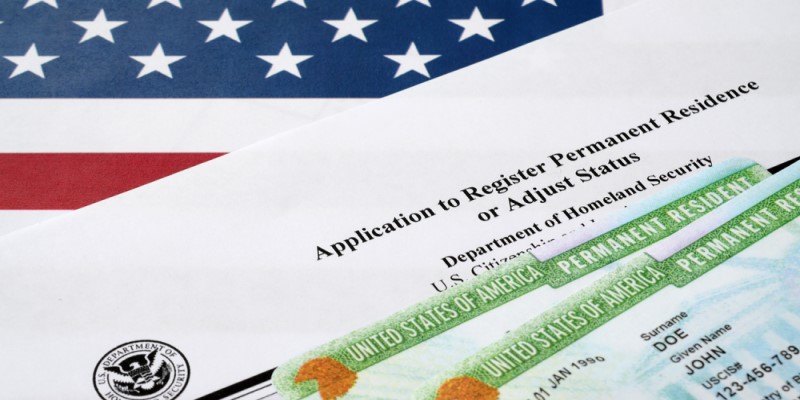
(Reviewed June 2025)
By Anayat Durrani
In 2025, EB-5 investors already living in the U.S. can take advantage of concurrent filing—a strategy that allows them to submit Form I-485 along with Form I-526 to remain in status, apply for work and travel permits, and potentially expedite their path to a green card.
The I-485 application to register permanent residence or adjust status allows EB-5 immigrant investors already in the United States to apply to change from nonimmigrant status to conditional permanent resident status. Experts say concurrent filing can be an advantage for those who would like to remain in the US with status and maintain their ability to work.
“Filing concurrently offers advantages for investors currently in the United States in a dual intent visa status,” says Rakesh Patel, managing partner, Patel Law Group. “Even though the priority date does not get locked by filing AOS, the investor can benefit from concurrent filing in some cases whenever there is a retrogression in the priority dates.”
The positive impact of concurrent filing for EB-5 investors
Under the new EB-5 Reform and Integrity Act of 2022 (RIA), Patel says, an investor can file Form I-485 concurrently with Form I-526 or before the adjudication of Form I-526, when the priority date is current under Chart A (Final Action Dates) of the visa bulletin, or USCIS has specified the use of Chart B (Dates for Filing).
Patel says concurrent filing is beneficial since filing the I-526 and I-485 together means having the opportunity to apply for a work/travel permit. In addition, this permit can be renewed as long as the I-485 remains pending and the I-485 can be adjudicated depending upon the approval of the I-526 and visa availability.
“Before the passage of the RIA of 2022, when clients asked us what privilege they would get from filing an I-526 petition, we were at somewhat of a loss for words because until approval of their petition, even if they were in the United States with a valid nonimmigrant visa like F-1 visa or H-1B visa, they would not be able to adjust status,” says Marko Issever, Chief Executive Officer, America EB5 Visa, LLC. “In other words, the filing of I-485 was conditional upon approval of their I-526 petition.”
Issever says the RIA changed that and now applicants with nonimmigrant visas in the US can file four forms concurrently: the I-526 (EB-5 visa petition), I-485 (adjustment of status to permanent resident application), I-131 (known as travel authorization or advance parole travel document) and Form I-765 (application for employment authorization).
“The processing times for the last two are significantly shorter than the time it takes for I-526 adjudication,” says Issever. “While their application is pending, investors can now work and freely travel, a significant advantage. They can work and travel in months and do not have to wait for the adjudication of their I-526, now taking four to five years.”
The process to file I-485 for EB-5
Applicants must ensure they use the current edition of Form I-485 when filing. The I-485 application is typically filed by an immigration attorney for EB-5 program applicants. USCIS provides a checklist on their website to assist with supporting documents.
Also, the I-485 application has a filing fee of $1,440 and is available at the USCIS website. Applicants must already have approval of Form I-526 to file Form I-485.
To avoid delays in the adjudication of Form I-485, USCIS suggests submitting Form I-693, Report of Immigration Medical Examination and Vaccination Record, at the same time as Form I-485 and filing all required initial evidence and supporting documentation. The USCIS says submitting both at the same time, “may eliminate the need for us to issue a Request for Evidence (RFE) to obtain additional evidence and documentation, which may further delay adjudication of your case.”
The field office based on an applicant’s residence typically processes the I-485, which means the processing time can vary depending on the specific field office, Patel says.
“USCIS provides estimated processing times on their website. The processing time can vary from eight months to 26 months,” says Patel.
While USCIS is increasing the number of cases that can be filed online, Patel says there is currently no online filing option. “This application must be shipped to the correct location, per USCIS’s filing instructions,” says Patel.
How to qualify for concurrent filing for EB-5
To qualify for concurrent filing of the I-485 with the I-526 petition, Issever says there must be visa availability for the selected project category.
“We are seeing an increased number of applicants born in China and India residing in the United States, choosing projects from the set-aside categories of the targeted employment area (TEA) kind,” says Issever.
With fewer quality rural TEA project options compared with high employment TEAs and “the carve-outs of rural projects are double the high unemployment kind,” he says most investors from retrogressed countries are focusing on the rural category.
“There is an overwhelming demand from mainland China-born students studying in the United States and India-born professionals working in the United States with nonimmigrant work visas such as H-1B,” says Issever.
DISCLAIMER: The views expressed in this article are solely the views of the author and do not necessarily represent the views of the publisher, its employees. or its affiliates. The information found on this website is intended to be general information; it is not legal or financial advice. Specific legal or financial advice can only be given by a licensed professional with full knowledge of all the facts and circumstances of your particular situation. You should seek consultation with legal, immigration, and financial experts prior to participating in the EB-5 program Posting a question on this website does not create an attorney-client relationship. All questions you post will be available to the public; do not include confidential information in your question.








